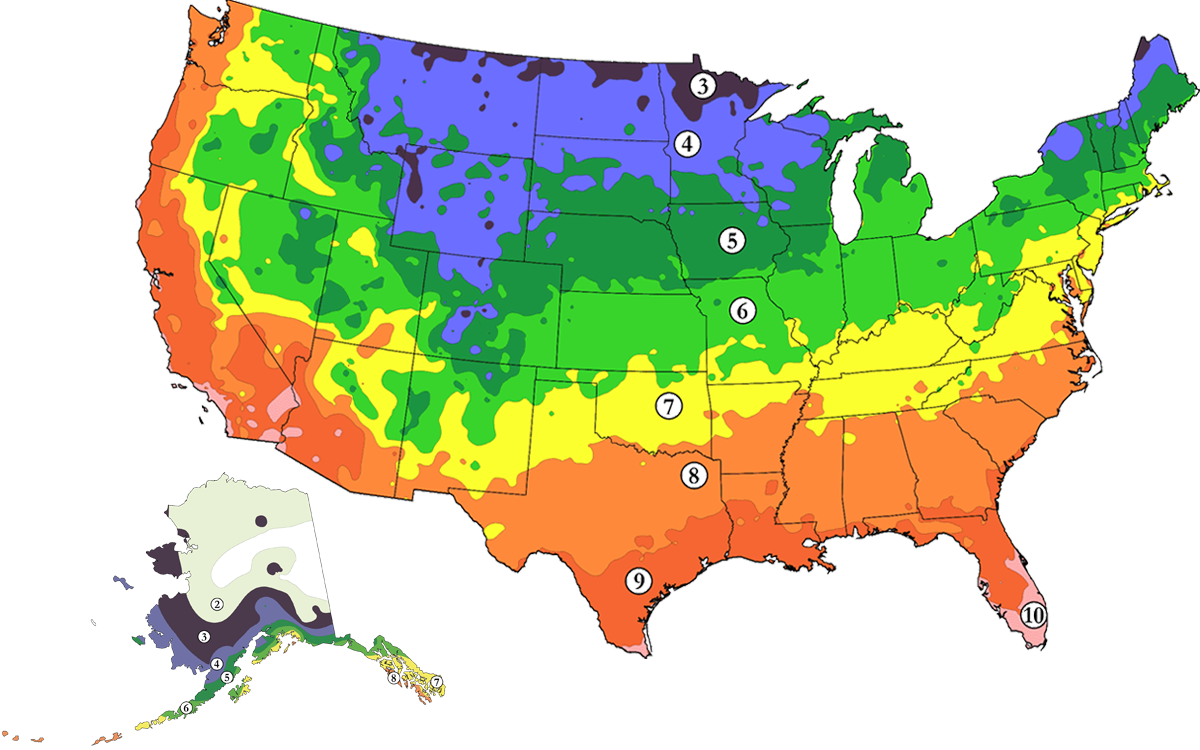The Plant Hardiness Zones divide the United States and Canada into 11 areas based on a 10 degree Fahrenheit difference in the average annual minimum temperature. (The United States falls within Zones 2 through 10). For example, the lowest average temperature in Zone 2 is -50 to -40 degrees Fahrenheit, while the minimum average temperature in zone 10 is +30 to +40 degrees Fahrenheit.
Suggested hardiness zones have been indicated for all trees and perennials available online from the Foundation. If a range of zones, for example, zones 4-9, is indicated, the tree or perennial is known to be hardy in zones 4, 5, 6, 7, 8, and 9. Suitable hardiness means a plant can be expected to grow in the zone’s temperature extremes, as determined by the lowest average annual temperature.
Keep in mind that local variations such as moisture, soil, winds, and other conditions might affect the viability of individual plants.
You may want to ask a local professional arborist or nursery about which trees to plant in your community.
